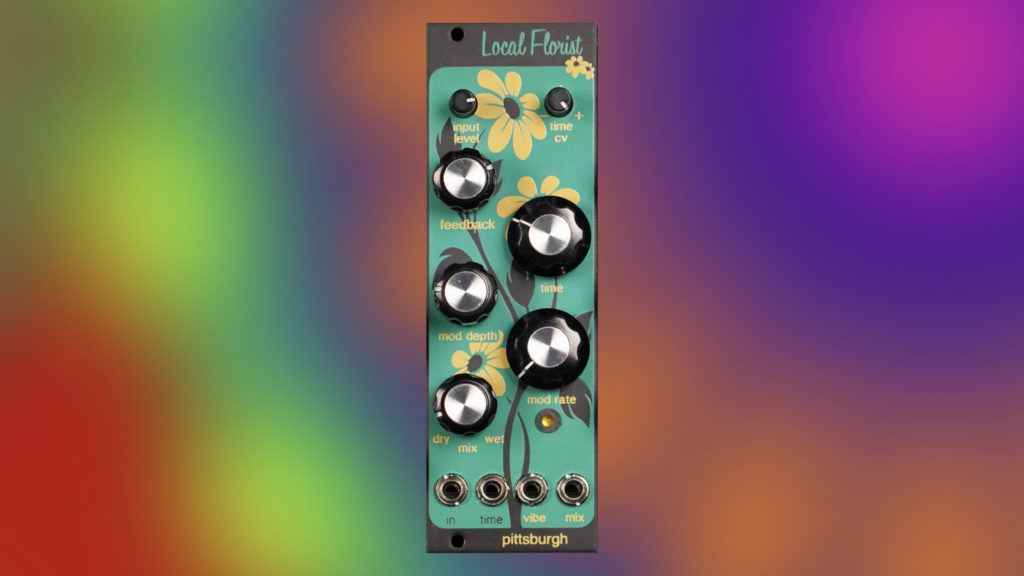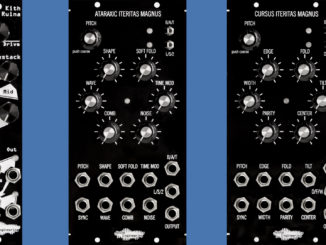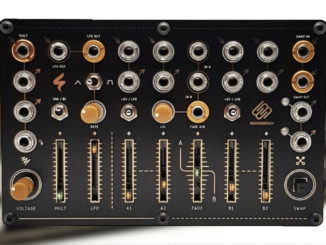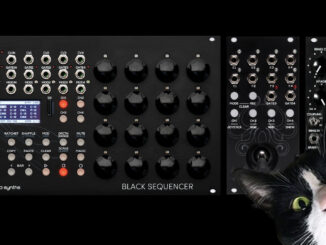Pittsburgh Modular Local Florist is an experimental feedback module for Eurorack with which you can discover soft and wild feedback soundscapes
With the Cascading Delay Network, Richard Nicol (Pittsburgh Modular) presented a very exciting delay module. This was already presented at NAMM 2020 and is now available. Now the developers show their next development and this has to do with feedback experiments again.
Local Florist is a 8HP CV-controllable feedback processor that is capable of creating a wide range of sounds. From very short delays, flanger, chorus, spring-y feedback, karplus-storng like, up to pseudo reverb sounds. The highlight is certainly the front panel interface, which is reminiscent of a sea of flowers or flower power. Does that mean that we can also do wild experimentation with it. I think yes.
Pittsburgh Modular Local Florist
The core of the module is an analog BBD (Bucket Brigade Device) chip that is paired with a special feedback circuit. According to the developer, it delivers a bouquet of sonic textures for any occasion. It was part of the upcoming Voltage Research Laboratory 2 Synthesizer, but the standalone prototype was so much fun for them that they decided to make a limited edition product out of it.
The front panel has 7 knobs, five big and two small ones. It offers an input level, a feedback amount, time, mod depth, mod rate, and a dry/wet mix knob. The time control sets the delay time that ranges between 6.2 and 28.5 milliseconds. It’s always very short and so not designed to be a monster delay. Instead, Local Florist works great as a processor for effects that require very short delay times. The latter can be modulation with CV via the time CV input and the modulation signal can be inverted with the attenuverter. An internal LFO for modulation is onboard which goes up to 120 Hz.
Connectivity
Local Florist has two outputs, one for the mix and another for the vibe. For the mix output, you have a dry/wet control with which you can set the right amount with which you can mix in the amount of effect you want in your signal. Unlike the mix out, the Vibe output always outputs the pure effects signal.





Be the first to comment